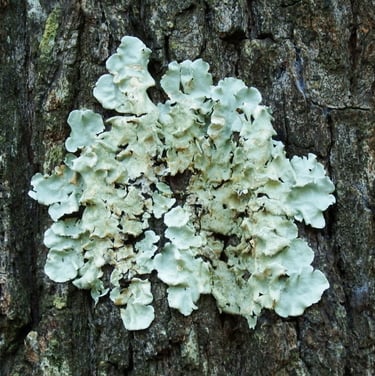Flavoparmelia caperata


Image by baronsamedi
Flavoparmelia caperata is a unique lichen with a noticeable pale yellow-green top layer when dry. Its rounded lobes, typically 3–8 mm wide, often feature granular soredia patches. While the lobes can be smooth, they may appear wrinkled in older specimens. The lower surface is black with a brown margin, and the attached rhizoids are black and unbranched.
Chemical Composition
Phenolic compounds: 90 mg/g
Flavonoids: 34 mg/g
Antioxidant capacity: 550 µg/mL IC50
Major compounds: Usnic acid, protocetraric acid, and caperatic acid
Cell walls: Isolichenan
Description
Lichens were used since ancient times, for various folk medicine applications. Flavoparmelia caperata is used in some regions of Chile for treating dispepsia, bronchitis, diabtetes, tuberculosis, hemorrhages, spermatorrhea etc. In Romania it is frequently found in oak forests (on various species of the genus Quercus). It can also be found on the bark of maples, birches, lindens, walnuts, carobs, beeches, hornbeams, trees of Prunus genus, including the orchards. Sometimes it also colonizes the bark of conifers, the wood of dead trees or the saxicol environment [2]. Regarding the chemical composition of lichen tissues, there are differences related to the age and region of the thallus. Iron and copper are mainly concentrated in symbiotic algae. The lower cortex of the young parts concentrates elements such as Ni, Si, Ti, probably having a protective role. The marrow, especially that of my old areas of the thallus, accumulates
Source: https://revistia.org/files/articles/ejnm_v2_i2_19/Pirjol2.pdf





